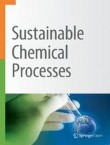Isolation, purification and characterization of Trichothecinol-A produced by endophytic fungus Trichotheciumsp. and its antifungal, anticancer and antimetastatic activities
A total of 30 endophytic fungi (AAP-PS 1–30) were isolated from the medicinal herb Phyllanthus amarus and screened for the production of Trichothecinol-A. Out of all the endophytic strains screened for Trichothec...











